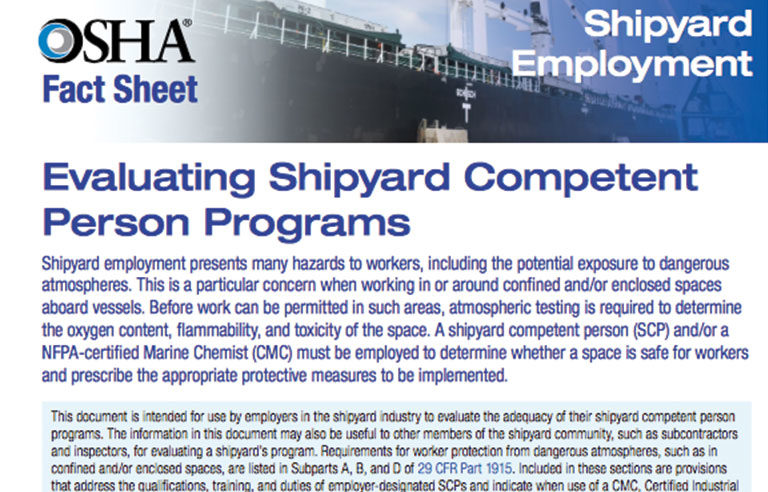OSHA releases fact sheets on Zika virus, evaluation of Shipyard Competent Person programs

Washington – OSHA has released two new fact sheets: one on preventing Zika virus exposure in biomedical laboratory workers and the other on evaluating Shipyard Competent Person programs.
The fact sheet on the Zika virus details how laboratory exposures occur, often through bodily fluids, and how to prevent exposures. Labs should undergo risk assessments, OSHA advises, with the fact sheet detailing the standards, recommendations and biosafety practices to follow.
OSHA also looks at worker training required under its Bloodborne Pathogens Standard (1910.1030), and what employers should do in the case of an exposure or if a worker shows signs/symptoms of the virus.
The fact sheet notes that the Zika virus is “a nationally notifiable condition” and labs should consult the Centers for Disease Control and Prevention for reporting guidelines.
OSHA also is giving shipyard industry employers a way to ensure their Shipyard Competent Person programs are adequate.
Before work is performed in a confined space on a vessel, a Shipyard Competent Person or a marine chemist certified by the National Fire Protection Association must decide whether the area is safe and recommend the proper protective measures. The confined area also must undergo atmospheric testing for flammability, oxygen content and toxicity.
The fact sheet outlines the knowledge and skill requirements for Shipyard Competent Person and certified marine chemists, along with the expected tasks for each job. It also includes a checklist for assessing Shipyard Competent Person programs, which features the following note: “Where assessment results indicate inadequacies in the program, it is recommended that a Certified Marine Chemist or a qualified safety and health professional examine the program and suggest methods for improvement.”
Post a comment to this article
Safety+Health welcomes comments that promote respectful dialogue. Please stay on topic. Comments that contain personal attacks, profanity or abusive language – or those aggressively promoting products or services – will be removed. We reserve the right to determine which comments violate our comment policy. (Anonymous comments are welcome; merely skip the “name” field in the comment box. An email address is required but will not be included with your comment.)

